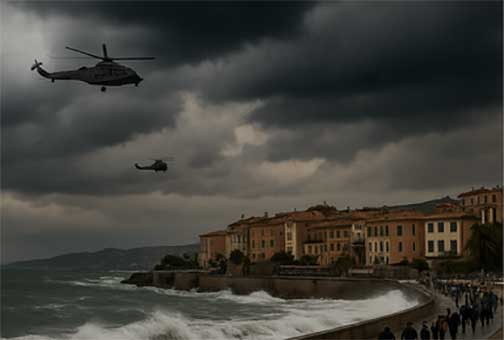In early December, a significant crowd gathered at Rome’s National Gallery of Modern and Contemporary Art for the debut of "The Time of Futurism," a much-anticipated exhibition celebrating a key movement in 20th-century art. While Futurism is recognized for its innovative break from past styles, it remains shadowed by its connections to the nationalism and militarism of Mussolini's Fascist regime.
Notably missing from the event were several scholars and professionals who had dedicated a year to crafting the exhibition. Their abrupt dismissal by the culture ministry over the summer sparked backlash from the academic community. The replacements, appointed by ministry officials, included an architect, an archaeologist, and an expert in Medieval art—critics argue they lack the necessary qualifications to represent the nuances of Futurism.
Massimo Duranti, one of the scholars ousted from the project, expressed dismay over the sudden overhaul, stating, “I was told, 'arrivederci' — you never existed.” He voiced concerns that the exhibition was transformed into a narrative that glorifies Futurism during the regime, rather than exploring its complexities.
In defense, Massimo Osanna, director of Italy’s state museums, refuted allegations of ideological motivations behind the changes, claiming the previous experts were never formally appointed. He contended that the new organizing committee aimed to showcase "an extraordinary era from many points of view."
The push for a Futurism exhibition had long been championed by Gennaro Sangiuliano, Italy’s former culture minister, whose tenure was cut short after a scandal involving personal misconduct. Sangiuliano was selected for the role by Prime Minister Giorgia Meloni, the leader of a right-wing party rooted in post-fascist ideologies.
As debates intensify over the exhibition’s content and direction, the tension between artistic expression and political influence in Italy continues to be a contentious topic.
Notably missing from the event were several scholars and professionals who had dedicated a year to crafting the exhibition. Their abrupt dismissal by the culture ministry over the summer sparked backlash from the academic community. The replacements, appointed by ministry officials, included an architect, an archaeologist, and an expert in Medieval art—critics argue they lack the necessary qualifications to represent the nuances of Futurism.
Massimo Duranti, one of the scholars ousted from the project, expressed dismay over the sudden overhaul, stating, “I was told, 'arrivederci' — you never existed.” He voiced concerns that the exhibition was transformed into a narrative that glorifies Futurism during the regime, rather than exploring its complexities.
In defense, Massimo Osanna, director of Italy’s state museums, refuted allegations of ideological motivations behind the changes, claiming the previous experts were never formally appointed. He contended that the new organizing committee aimed to showcase "an extraordinary era from many points of view."
The push for a Futurism exhibition had long been championed by Gennaro Sangiuliano, Italy’s former culture minister, whose tenure was cut short after a scandal involving personal misconduct. Sangiuliano was selected for the role by Prime Minister Giorgia Meloni, the leader of a right-wing party rooted in post-fascist ideologies.
As debates intensify over the exhibition’s content and direction, the tension between artistic expression and political influence in Italy continues to be a contentious topic.



















